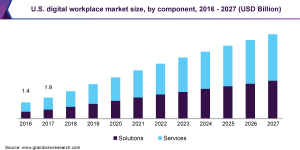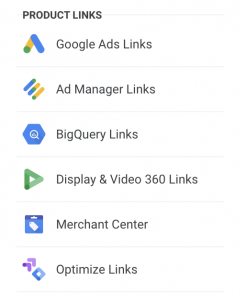
You’ve got 975 unread emails…
…Your vital files live locally on random team members’ computers
Your team tell you they never saw the task they were assigned, and you have no way to track their progress.
This sounds like a true nightmare, right? Well, the thing is, it’s a reality for many businesses.
By using these collaboration tools for your business, you can improve your team’s communication, stop losing tasks, and make sure everyone’s accountable for getting work done.
Here’s the categories I’m going to look at:
- Projects
- Development
- Chat
- Cloud Storage
- Design
- Social
- Spreadsheets
- Tasks
- Video
- Writing
Let’s get into it.
Collaborative project management tools
For decades, teams have tracked projects with whiteboards, email, and scraps of sticky notes that end up who-knows-where.
Now, you can use project management tools to store tasks, assign responsibility, and track the progress of a project. Here are three tools of different kinds you should check out:
Trello

Trello is a kanban project management app that mainly works with lists and cards. Every task or resource is its own card, and you can organize them into lists depending on the status (backlog, in progress, done, etc.)
Trello supports integrations with Google Drive, Slack, and over 500 other apps, which makes it easy to use alongside your current set up.
At Process Street, we have a board for every team member, reviewed in meetings by a manger, and a board for every project — e.g. blog posts, guest posting, email marketing.
Premium pricing starts at: $ 9.99/user/month.
Basecamp

Basecamp is a complete project management suite including file upload, discussions, to-do lists, text documents, calendar events, and even chat.
At Process Street, we used Basecamp to organize graphics creation with Koombea, a design agency. We collaborated over mockups and logo ideas, and Basecamp’s interface made everything easy for the entire team involved to monitor for updates.
Premium pricing starts at: $ 99/organization/month
BeeCanvas

BeeCanvas is a collaborative whiteboard for drafting out projects, sketching designs, and housing resources from all around the web. It includes native functionality for Google Drive, Dropbox, and YouTube embeds.
I use BeeCanvas for planning side-project content, and filling boards with relevant content to be later organized when I come to write it up.
Premium pricing starts at: free (premium TBA).
Collaborative tools for developers
Whether it’s pair programming or bug tracking, developers need friction-free environments to collaborate in that allow for enough depth to track the code.
In this section, I’m going to look at Cloud9 and JIRA.
Cloud9

Cloud9 is a collaborative IDE. Think of it like Google Docs for code, where multiple developers can work on the same file and see each other’s edits in real time.
It supports code suggestions, debugging, VIM mode and a fully customizable UI. However you’re used to coding, you can replicate it with Cloud9.
Premium pricing starts at: $ 29/user/month.
JIRA

JIRA is issue tracking software for development teams. That means anyone can create, prioritize and assign issues to the rest of the team. Issues can be bugs, features, or user stories. Once an issue is created, it can be assigned to a sprint and then allocated to developers, who leave comments and report on their progress.
At Process Street, we use JIRA as our only issue tracking app, and it contains all bugs, features, and user stories.
Premium pricing starts at: $ 10/10 users/month.
Collaboration tools for team chat
Instead of relying on email (a notoriously irritating time-suck), switch to a chat app designed for business. Some businesses have moved from email to a platform like Skype, but that still isn’t suitable for businesses who need to control group permissions, have public channels, upload files and control notification preferences.
Here are some tools that do that:
Slack

Slack probably doesn’t need much introduction. It’s been taking the enterprise communication world by storm since 2014. For the uninitiated, Slack is a team chat app that features permissions, file uploads, code snippets, notification preferences and integrates with apps like Trello so you can get a direct activity feed into your channels.
At Process Street, we use Slack as our main method of communication. We have it linked up to Process Street, Trello, RSS, Twitter, and even Giphy for a bit of silly fun.
Premium pricing starts at: $ 8/user/month.
HipChat

HipChat is Slack’s main competitor. It has most of the features I mentioned above, but also the benefit of being natively integrated with the rest of the Atlassian suite which includes Confluence, BitBucket, and JIRA.
Premium pricing starts at: $ 2/user/month.
Fleep

Unlike Slack or HipChat, Fleep isn’t a dedicated chat app. It’s actually a tool for both external and internal communication. It uses email, but displays it in a chat interface so you can send and track emails to other companys and your team members from the same Slack-like interface.
Premium pricing starts at: $ 1/user/month.
Cloud storage tools for collaborating over shared files
You won’t get away with saving files locally any more. In fact, that’s been true for almost a decade now! Use cloud storage to centralize your files, keep everyone on the same page, and never lose any important documents again.
Dropbox

Dropbox includes unlimited storage, integrations with over 500 apps, and selective sync from local folders. This means you can create a ‘work’ folder on your computer, and save things locally while automatically syncing them to your Dropbox, retaining the same folder structure.
Premium pricing starts at: $ 10/user/month.
Google Drive

If your team uses Google Docs, Google Sheets, or other Google products, Drive is an ideal solution. You can use Google’s suite of online document editing and creation apps right inside Drive, negating the need to transfer files between storage.
The marketing team at Process Street uses Google Drive to share spreadsheets, image assets and research documents.
Premium pricing starts at: $ 1.99/user/month.
Collaborative design tools
Design can be a tough thing to nail down, and often needs a ton of iterations. To avoid problems like endless email chains with files titled ‘finalfinalfinal.psd’ attached, just used a tool that helps you store revisions, comment on designs and get a better idea of what your team’s progress is.
InVision

InVision lets you upload designs, get feedback, then iterate on them. It supports comments, @mentions, and even a live mock-up mode to simulate web designs. It integrates with over 500+ apps via Zapier, and has a native integration with SVG-editing tool Sketch.
It isn’t only prototyping though…
InVision also supports a design project management layer on top, meaning it’s not just for managing single designs, but multiple projects at once. It’s perfect for a design agency working with clients, or a design team getting approval from managers.
Premium pricing starts at: $ 5/prototype/month.
RedPen

You can think of RedPen as a light version of InVision. It has projects, design annotation and collaborative elements, but no workflow/project management tools included. Also, unlike InVision, it has no integrations.
Premium pricing starts at: $ 4/project/month.
Collaboration tools to create a social network for your company
Everyone’s used to Facebook, so why not bring that transparency and interactivity to work? With these tools, you can set up an intranet that isn’t just a bulletin board for news from managers, but a platform where everyone can interact.
Yammer

Yammer takes the simplicity of the social media we all know and uses it to help companies create an enterprise social network.
With chat, a news feed, private groups and announcements, it really is like a private, company version of Facebook you can use to store documents, give praise, take polls, and share news about the company without relying on a traditional intranet platform.
Process Street has a direct integration with Yammer, meaning all checklist activity can be displayed in the news feed, and you can use your Yammer organization to create a Process Street account.
Premium pricing starts at: $ 3/user/month.
Communifire

Communifire is another social network platform like Yammer, with a focus on sharing and aggregating relevant industry content, and feeding content from the company blog into a social space.
It functions like a mix between Yammer and Sharepoint, including document management, company wikis, and a deep search.
Premium pricing starts at: $ 10/user/month.
Collaborative spreadsheet tools
The ability to quickly share spreadsheets and edit them collaboratively is extremely valuable, especially when the alternative is storing tons of versions on a local machine.
Depending on the size of the data set, your best bets are either Google Sheets or Airtable:
Google Sheets

Fully integrated with Google Drive, spreadsheets made in Sheets are ridiculously easy to share and collaborate over. While it’s missing a few of the important features for Excel power users, you’ll be able to do 95% of what you expect just by using Sheets.
For massive data sets, complex formulas or Microsoft-specific add ons, you’re better off with Excel which now has a cloud-based collaborative version, Excel Online.
Premium pricing starts at: free.
Airtable

Airtable isn’t just a spreadsheet tool (although you can use it exactly like one) — it’s a relational database. That means you can set up multiple ‘spreadsheets’, and link the cells between them.
If, for example, you wanted to create a database of emails, you’d have one spreadsheet that contains the emails, one with the sender’s names, and then link the records to auto-populate other columns and manipulate the data more effectively.
At Process Street, we manage everything in Airtable. All research projects, all content assets, all podcast planning.
Premium pricing starts at: $ 12/user/month.
Collaborative task list tools
Sometimes project management isn’t enough. You might need to use a task or workflow management tool to break down the action items, assign them to your team, and track progress. The two tools below will help you manage your recurring tasks, but in drastically different ways.
Todoist

Todoist is a task management app that works as well with teams as it does for personal tasks. I have two folders inside the app, one for work that contains projects related to writing, editing, etc (see above), and one for personal lists, such as shopping and ‘to watch’ lists.
When used with teams, it’s possible to assign tasks to individuals, send notifications and set due dates. It also integrates with over 500 apps via Zapier, so it’s easy to push tasks from other apps into Todoist where they can be prioritized and scheduled.
Premium pricing starts at: $ 3/user/month.
Process Street

Process Street isn’t a straight-up task manager, but it is for managing recurring processes.
- Create a recurring task list
- Run a checklist every time the process needs executing
- Assign the checklist to your team
- Track the progress from your dashboard
Trigger checklists from over 500 apps with our Zapier integration, and make your team accountable with checklists that explain tasks perfectly.
Premium pricing starts at: $ 12.50/user/month.
Collaborative tools for video
Whether you just need a quick video call to hash out the details, or to explain something with a screenshare, collaborative video is a must for remote teams.
At Process Street, we’re a fully remote team so have had a lot of experience making working at a distance possible.
Appear.in

The fastest, easiest platform for video calls you’ll ever use.
Appear.in requires no log in, no signup, no actual ‘calling’ is necessary at all. Just claim a URL for your company, and then give the URL to anyone you want to call with. When you’re both on the page, you’re in a video call. That’s that.
Premium pricing starts at: free (premium TBA).
Screenhero

Screenhero is a screensharing tool that lives inside Slack. That means with just one chat command (/hero @username), you can start screensharing with anyone in your Slack channel.
After being acquired by Slack, Screenhero is undergoing an overhaul of its pricing plans and will be accepting new users soon. For existing paid Slack users, though, you’ll get it for free.
Premium pricing starts at: free for paid Slack users (premium TBA).
Collaboration tools for writing teams
Writing teams will consist of writers and editors, and pieces undergo multiple approvals before they’re ready to go. That’s the reason why you’re not going to get away with Word, or writing it up in WordPress directly. You need to be working with a collaborative editor that has versioning, comments, and edit history. Check these out:
Beegit

If your team likes to write in markdown, Beegit is ideal. It’s a document management and creation app for teams that supports comments, edit tracking, projects and permissions. The major difference between this an other apps on the list is that it’s a markdown editor. Markdown is a quick and easy way to format text without HTML.
Premium pricing starts at: $ 7.90/user/month.
Quip

The range of powerful features aside, Quip is a beautiful writing app that makes typing and formatting articles a joy.
It’s easy for teams to keep up to date with each other’s activity because the main screen of the app is an ‘inbox’ style feed of recent events: document creation, comments, edits, etc.
At Process Street, we always collaborate inside Quip before moving it into WordPress. And, when the time comes, it’s easy to move things over because of Quip’s clean HTML export.
Premium pricing starts at: $ 6/user/month.
Dropbox Paper

Instead of singing Google Docs’ praises (because everyone already knows), I’m going to highlight a lesser known yet just as capable app — Dropbox Paper. For those who opt to use Dropbox over Google Drive, Paper is ideal. Created documents live next to your stored files, and it allows you to easily embed Dropbox files inside the documents, too.
Teams can collaborate with edits and comments, all of which is tracked by the app.
Premium pricing starts at: free.
Conclusion
The tools you use to collaborate with your team are just as important as the attitude you have. Take a remote first approach to work, and it’ll make it easier to collaborate, centralize data, and scale your business.
Any more recommendations? Let me know in the comments. 
(164)
Report Post






